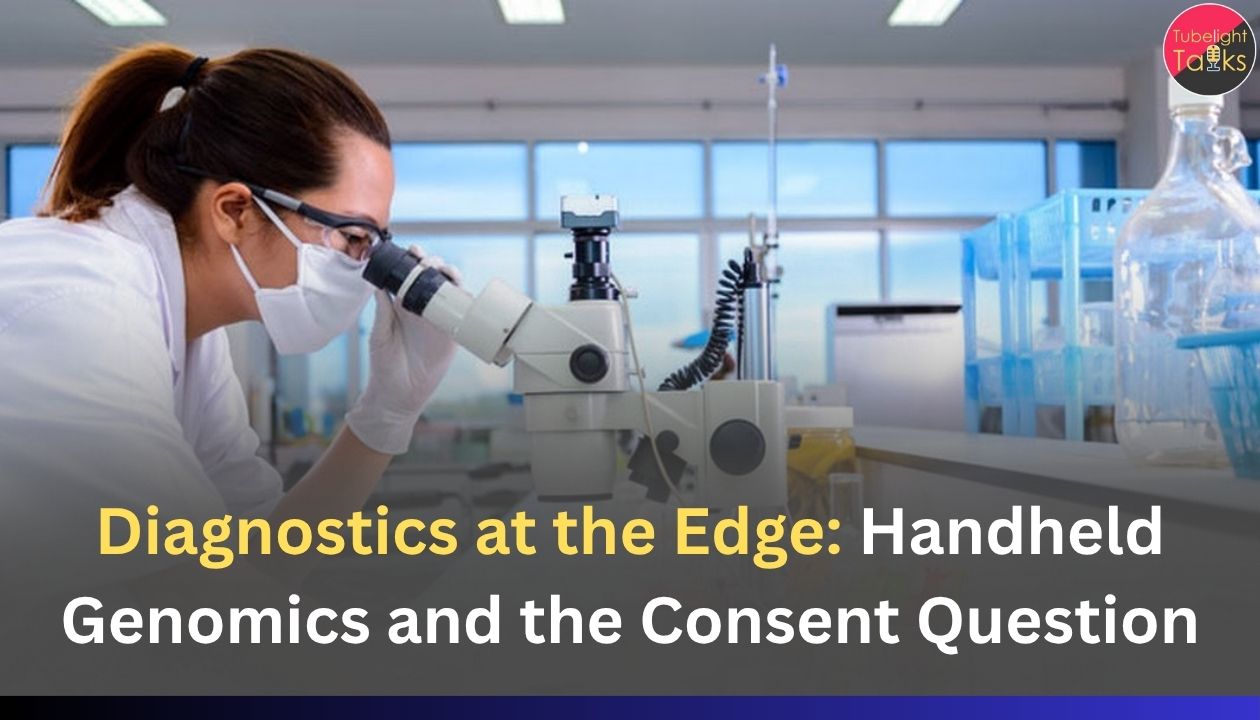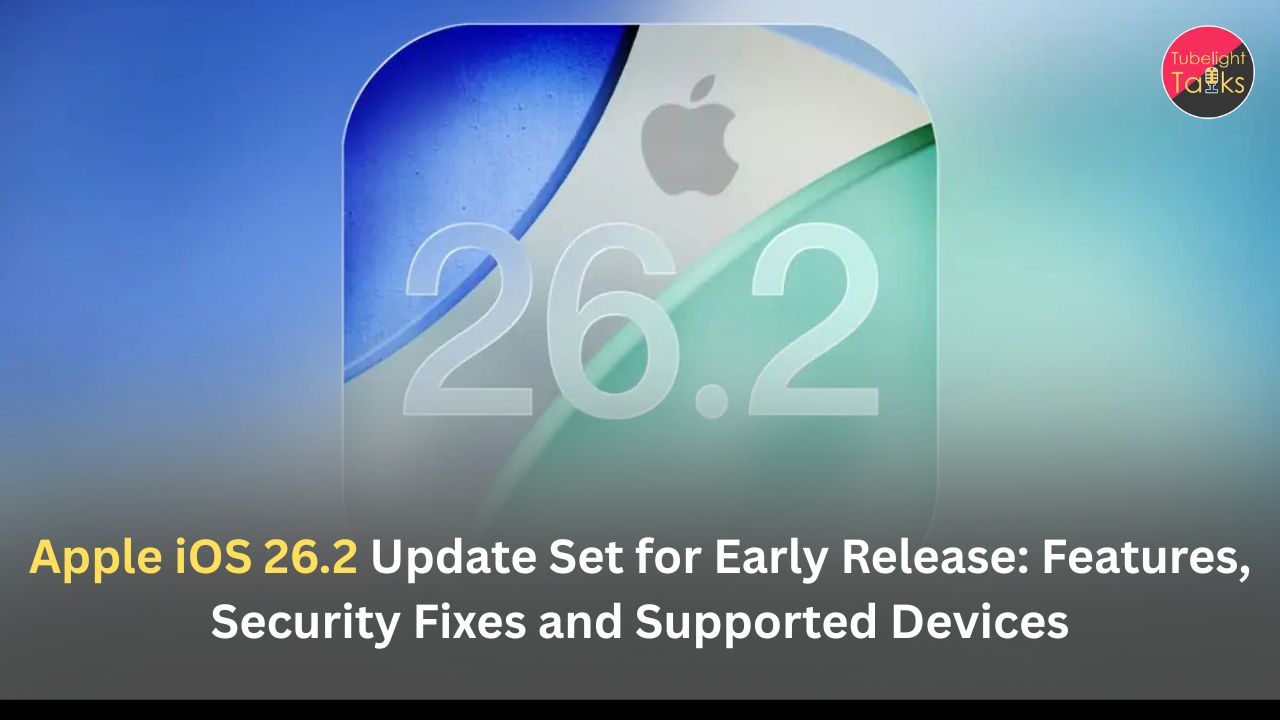Diagnostics at the Edge: Pocket-sized nanopore sequencers like Oxford Nanopore’s MinION can now run on a laptop or even a rugged tablet in the field, weighing under 130g and delivering up to tens of gigabases of sequence data in real time. During the West African Ebola crisis and later outbreaks, teams successfully sequenced viral genomes in makeshift labs in Liberia and Sierra Leone using these devices—guiding response strategies on the ground.
At the same time, CRISPR-based and smartphone diagnostics can detect SARS-CoV-2 and other pathogens with a phone camera and simple cartridges, often in under 30 minutes. Reviews now describe CRISPR biosensors integrated with smartphones as “next-generation” point-of-care tests for infections and cancer biomarkers.
And the money is following: the DNA sequencing market was valued at about USD 17.2 billion in 2024 and is projected to grow to nearly USD 64.8 billion by 2032, at a CAGR of ~18%. This is the promise of diagnostics at the edge—fast, local, data-rich. But as genomic tools become lighter and more “plug-and-play,” ethicists, Indigenous leaders and regulators are warning:
When DNA can be captured anywhere, anytime, consent and control over that data become the new frontline.
The tech: Handheld genomics in action
1. Nanopore sequencers in the field
Nanopore sequencing passes DNA molecules through tiny pores in a membrane, measuring changes in electrical current to infer the sequence. Devices like the MinION are:
- Palm-sized (<130 g) and USB-powered.
- Designed for “sequence anywhere”—lab or field.
- Capable of up to ~48 Gb of data per run in current formats.
Use cases already demonstrated:
- Ebola & viral outbreaks – Real-time sequencing of Ebola virus genomes in field labs in Liberia; later work shows similar approaches for other viral outbreaks.
- Malaria surveillance – Prospective studies using nanopore for real-time analysis of Plasmodium genomes in endemic settings to track drug resistance.
- Arboviruses & vector control – MinION-based metagenomic detection of arboviruses directly from mosquitoes, with minimal sample prep.
- Clinical oncology – Portable nanopore sequencing of fusion genes (such as PML::RARA in acute promyelocytic leukaemia) to speed diagnosis and treatment decisions.
Recent assessments note that field-deployable sequencers still need basic lab infrastructure, computing, and stable internet for some real-time workflows, but the direction of travel is clear: smaller, cheaper, more mobile.
2. Smartphone + CRISPR diagnostics
On the other side of the spectrum are non-sequencing genomic diagnostics that still read genetic signatures:
- A CRISPR-based test for COVID-19 using a smartphone camera can report viral load in under 30 minutes.
- New CRISPR/Cas12a and Cas13 biosensors, some with pH-sensitive discs or lateral-flow style strips, use smartphone imaging to detect pathogens like Salmonella typhimurium at point-of-care.
- A 2025 biosensor integrating CRISPR/dCas9 with smartphone-based SERS (surface-enhanced Raman spectroscopy) can simultaneously detect multiple pathogens with high sensitivity.
These tools blur the line between “lab test” and “consumer device.” A health worker—or even, in future, a patient—could run sophisticated genetic tests using a kit and a phone.
3. Edge genomics is not just health
Portable sequencing and genomic sensing are also being used for:
- Food safety (screening for Salmonella, E. coli, Listeria at plants or ports).
- Environmental monitoring (metagenomics of water, soil, and wildlife).
- Border biosecurity (screening vectors or samples at airports/ports).
Wherever a swab can be taken, genomic data can now be created at the edge—and often uploaded instantly.
Why genomics is special: You can’t really “anonymise” DNA
Unlike many other medical tests, genomic data:
- Is highly identifying—even “de-identified” genomes can often be re-linked to individuals when combined with other datasets.
- Contains information not just about the patient, but also about biological relatives and sometimes about community-level ancestry.
- Can be reused indefinitely for future research, AI training and commercial applications in ways that can’t be fully predicted at the time of sampling.
That makes the consent question much harder than in routine point-of-care tests like blood sugar or haemoglobin.
The consent challenge at the edge
1. Speed vs understanding
Edge diagnostics are designed for speed and simplicity: a health worker in a busy ward or rural camp does not have time for a 10-page consent form.
Yet the 2024 WHO Guidance for human genome data collection, access, use and sharing emphasises that informed consent for genome data should clearly explain potential uses, data-hosting infrastructure, sharing for AI training and any limitations on withdrawal.
A follow-up critique in 2025 argues that WHO’s push for “granularity maximisation” (making consent as detailed as possible) may backfire, overwhelming participants with information and undermining real autonomy.
At the bedside or village clinic, the tension is sharp:
If you over-simplify, consent isn’t truly informed. If you over-complicate, consent becomes a box-ticking ritual nobody understands.
2. Individual consent vs community rights
Indigenous scholars and communities have repeatedly documented how genomic research has been exploitative or extractive, with data taken, reused and commercialised without meaningful benefit-sharing.
Recent work on Indigenous data sovereignty (IDSov) argues that communities—not just individuals—have rights over genomic data related to them, including non-human genomics tied to Indigenous lands.
Handheld genomics in remote or Indigenous areas raises practical questions:
- If a field team sequences a pathogen from a patient in a small Indigenous community, does the community have a say over how that data is stored and shared?
- What if human reads or ancestry information are incidentally captured in a metagenomic run?
- Who decides on commercial partnerships based on those sequences?
Current consent forms rarely cover this level of collective governance.
3. Newborns, future uses and “consent by proxy”
The debate is not abstract. In 2025, plans in England to DNA test all newborns to predict future disease risk—using genomics and AI—sparked controversy about whether parents can meaningfully consent on behalf of infants for long-term, potentially commercial uses of genomic data.
Critics pointed to past allegations that DNA from COVID-19 tests was sold without proper consent as a warning, and asked whether parents truly understood how their child’s genome might be used decades later.
At the edge, similar dilemmas appear when:
- Children’s samples are sequenced in paediatric wards or outreach camps.
- Biobanked samples from field diagnostics are later re-analysed for research or AI training.
4. Security and cloud dependence
Portable sequencers often rely on cloud-connected software and remote basecalling. A 2025 security analysis of portable sequencing systems highlighted risks such as IP-level exposure and potential device spoofing on shared networks.
If genomic data flows automatically to vendor servers:
- Do patients know which country their data ends up in?
- Is there a path to delete or restrict that data later?
- How are cross-border data transfers handled under laws like GDPR or India’s DPDP Act (2023)?
The consent forms visible at the field site often say little about these technical realities.
Regulatory and ethical responses
WHO’s global principles
WHO’s 2024 guidance sets out globally applicable principles for ethical, legal and equitable use of human genomic data, stressing:
- Respect for persons, including robust informed consent and the ability to withdraw (subject to clear limits).
- Fairness, solidarity and benefit-sharing.
- Accountability, transparency and governance across the data life cycle.
Subsequent discussions in 2025 explore how to align national practices and integrate these principles into health systems.
Indigenous-led frameworks
Indigenous groups and scholars propose community-led governance frameworks, emphasising:
- Indigenous ownership or stewardship of genomic data.
- Community review of research proposals and consent language.
- Local control over access, storage and benefit-sharing.
Some argue that no handheld genomics project should start in Indigenous territories without clear agreements on data use and long-term governance.
Practical guardrails for edge diagnostics
Ethicists and legal scholars suggest that programs deploying handheld genomics should at minimum:
- Treat genomic diagnostics (including portable devices) as generating sensitive data requiring higher protection.
- Use layered consent: a short, clear explanation at point-of-care plus optional deeper information for those who want it.
- Explicitly state whether data will be stored, for how long, and for what kinds of future use (clinical care only vs research vs commercial).
- Offer opt-out for secondary uses wherever feasible.
- Build in community consultation when working with small or Indigenous populations.
Genomics, dignity and Dharma
From a Satgyan lens, as taught by Sant Rampal Ji Maharaj, the debate around handheld genomics and consent isn’t just about legal compliance—it’s about Dharma (righteous conduct), Satya (truth) and Nyay (justice) in a domain that touches the core of human identity.
- It is adharma if institutions hide business motives or future uses behind vague phrases like “for research” while knowing that data may be monetised or used for projects the participant would not accept.
- True Satya requires plain-language explanations of what is known, what is uncertain, and what may change in the future.
- When genomic devices are used in poor, rural or Indigenous communities, justice demands that they receive direct health benefits, fair say over data, and protection from exploitation—not be treated as raw material for wealthy labs and companies.
- A Dharmic approach aligns closely with Indigenous data sovereignty: those whose bodies and lands generate the data should have a genuine voice in its governance.
- Compassion means using edge genomics to reduce suffering—early diagnosis, outbreak control, safer pregnancies—while resisting uses that fuel fear, discrimination or surveillance (e.g., genetic profiling for exclusion).
Satgyan reminds us that technological power without moral restraint can deepen karmic and social harm, no matter how advanced the devices become.
Read Also: How AI Is Transforming Healthcare in India: A 2025 Revolution
FAQs: Diagnostics at the Edge
1. What do “diagnostics at the edge” and “handheld genomics” mean?
They refer to performing advanced tests near the patient using portable sequencers or smartphone-based DNA/RNA detection tools instead of central labs.
2. Are handheld sequencers used in real outbreaks?
Yes. Portable nanopore devices have sequenced Ebola, malaria and other pathogens directly in field settings.
3. Why is consent more complex for genomic tests?
Genomic data is identifying, long-lasting, and reveals information about relatives, making future uses harder to explain and withdraw from.
4. What does WHO say about genomic data and consent?
WHO calls for strong consent, clarity on data use and sharing, withdrawal rights, and fairness in global benefit-sharing.
5. How can handheld genomics programs improve consent?
Use layered consent, clarify secondary uses, engage communities in governance, and offer control over data storage and cloud uploads.










